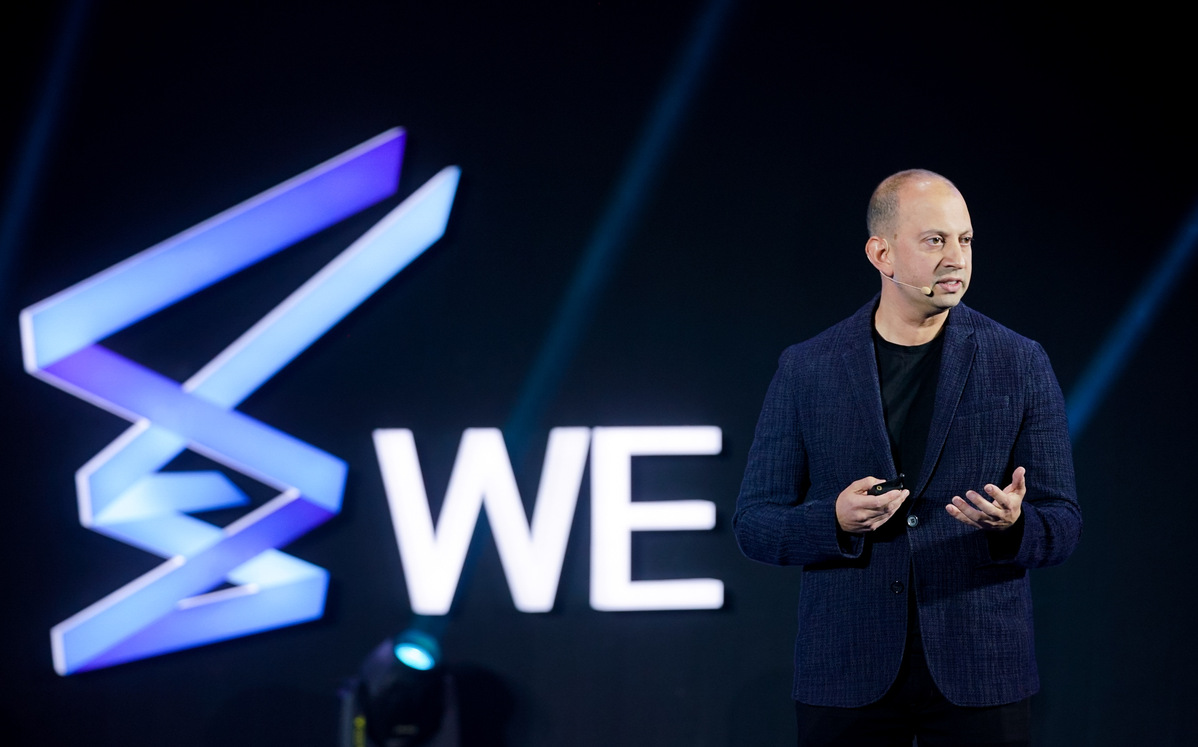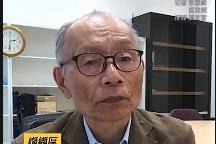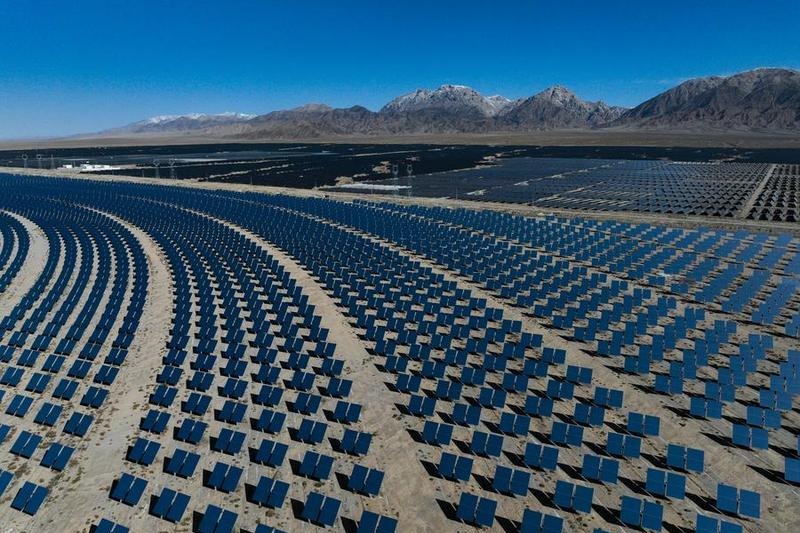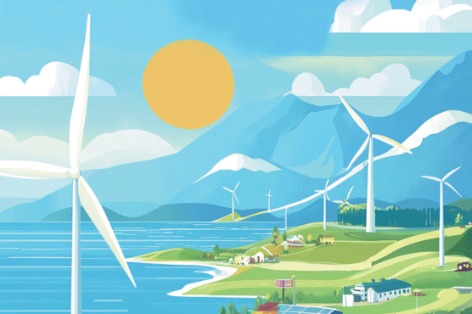Our greatest challenge: Finding solutions to threats in our future

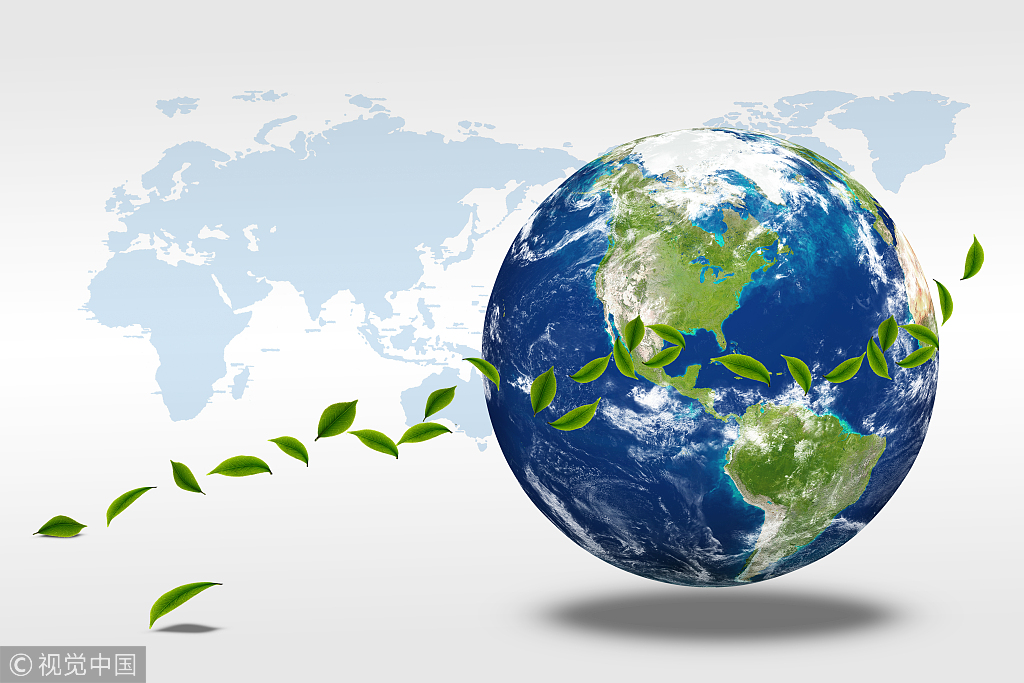
This is the second part of a piece by Tencent CXO David Wallerstein, who asks how we can prepare the Earth to cope with an expected world population of 10 billion people by 2050.
Despite the scale of the challenges around the need for food, energy and water or "FEW", there are also elegant solutions available to mankind right now. Powerfully, with FEW, when you begin to solve for one area, you also are solving for another.
• When agriculture uses less water, you have freed up water resources to use for other applications, or more agricultural products.
• If you can decouple the production of energy with water, then vast reserves of water can be intelligently channeled more directly to other applications. Importantly, your power production capability is not threatened by water stress itself. If necessary, your resilient power generation capability like wind or solar power can be used to create fresh water as well, without requiring water in the power generation process itself. Win-win.
• With more intelligent water treatment and management, we can save on the energy and inputs necessary to create essential fresh water, and we can effectively deal with wastes and polluting chemicals in our water that are not currently addressed by traditional water treatment systems. We can reduce waste of freshwater, by identifying and responding to leaks in a cost effective manner.
Each improvement aspect strengthens the other. Failing to address one area can make other access of the nexus more vulnerable.
The "Market Failure" of capitalism and "Return on Investment" thinking
Bold ideas beg some simple questions. For example, who's going to pay for this? Where's the money going to come from? Will investors be willing to fund any of these transformational ideas?
Therein lays a major challenge for trying to rearchitect the planet: Dealing with what I will call the "market failure of capitalism" and "return on investment" thinking.
Imagine this: You've been making gas-powered cars for 50 years. You have a massive global supply chain to make your gas powered car. Each component now has low cost and is pretty predictable. The designs work. Your energy supply network for these mobile vehicles—facilities called "gas stations"—are everywhere. Special liquid fuel— called gas—is extracted from a far away land, refined and processed, shipped across the ocean, driven across a country, then pumped into the ground into holding tanks, then delivered into the tank of a car with a special pump design. As unusual and counterintuitive as the architecture is, it is everywhere, already. The standards have already been set, the capital investment has already been made, and it works now, at massive modern human scale. Why change this? How are the investors going to get their money back if you change this architecture, or stop using it? Shutting down or changing this global supply chain would feel like an attack on your property rights and investment return potential if you've been funding this infrastructure.
And yet we all know that architectures like the gas-powered automobile ecosystem is one of the systems that it is threatening to life on Earth. We now know it can be done much better. However, doing what we know is right for the planet may squarely fly in the face of a capitalistic mindset that prioritizes return on investment as the highest priority. We find ourselves in a dilemma that our philosophical ancestors did not sufficiently prepare us for.
Do we allow for the new investment in next generation optimized infrastructure, with its uncertainty, it's potentially higher cost structures, and it's evolving supply chains? What if investors just don't want to make the investments anymore? It's not that they have a problem with the new intelligent infrastructure, but just that it's not the right fit for THEM. They'd like to be more conservative, go with existing, proven infrastructure; addressing planetary challenges is not in their investment mandate. After all, most investors are investing the capital of other people for a fee, as professional investors.
Their mandate is ROI strictly. Most investors would assume that addressing global problems directly needs to be done by others who have that in their mandate.
Then what happens if just most of the investors on Earth all think in a similar way: Generally risk averse, treating the primary objective as ROI, viewing a new architecture as being highly risky, not seeing addressing the challenges on the planet as part of the investment job, and investing other people's money with their primary objective being to maximize return for those capital owners? Put differently, just think of buying a stock on the stock market, and how much you would like its price to go up, and how disappointed you will feel if you lose money. Magnify that sentiment by all investors on Earth.
Now we can see why backing new resilient FEW-SHES architecture can be slow, can take a lot of time, and is accompanied by a lot of uncertainty. The FEW-SHES solutions face tremendous pressure to show that they are economically superior to the status quo problematic infrastructure options from Day One. This is in addition to needing to be superior in terms of their resilience, efficiency, scalability and other critical measures for the planet overall. Basically, nobody likes to lose money. Perfectly rational investors, as anyone who has ever bought stocks, have a pension fund, or a life insurance plan are understandably reluctant to step up to address global challenges. This logic is likely to hold until the status quo becomes more obviously unviable.
Enter government initiatives: Can governments help fill the investment gap?
So how do we encourage the necessary investment to upgrade critical architecture on Earth to embrace resilient FEW-SHES solutions, and do it urgently to address climate change dynamics with a growing human population?
Governments have a different role than professional investors. They get significant access to the wealth of society via taxation, sometimes over half of all revenues in a nation, and with this value under management, governments can seek to invest in new architectures for society, as well as commit to ongoing operational expenses (e.g., medical care, teacher's salaries for education) to ensure that the critical needs of their citizens are being met. It is a role that humans accept, and in most societies the discussion revolves around precisely how much governments can tax and how those government revenues should be spent most productively.
This ability to prioritize healthy outcomes for communities, nations and the planet— going beyond classic ROI considerations that characterize traditional investors and individuals globally— make government actors critical players at this special time in human history.
The benefits to society in shifting to "green" are not immediately and obviously captured by free market thinking. For example, more abundant fresh water could actually drive down the price of water, and less leaky water pipes might mean that a water utility actually bills a customer less money for water, as they are not passing on the cost of the water loss to customers (albeit in a rather tricky way). We can all agree that having abundant water supplies are an inherent social good, minimally to ensure that all human and ecosystem requirements are met, and then providing an additional benefit with nearby freshwater lakes, rivers and environmental resources that further enhance local quality of life. How do you put an objective economic valuation on all of that? In many cases, governments are more likely to be in a position to overall value these entire outcomes versus just classic investors. Moreover, they can have a very long time horizon for investments, not dealing with the classic constraints of needing to outperform market returns within a typical period of 8-10 years.
Take the area of energy as an example. One interesting aspect regarding renewable energy infrastructure is that it basically empowers a nation or region to access its own local energy sources. Green energy is local energy. The infrastructure, such as a wind mill or a solar panel, allows a region to convert the natural wind force or sunlight in the region directly to electrical power. The energy was an "untapped" local resource that can now be converted into electrical energy for local use. Partnering to deploy these assets is a facilitation of energy independence. Power generating resources dependent on fuel, e.g., coal, oil and biomass, effectively sign up a region to a long-term dependence on outside sources to continuously provide an uninterrupted source of energy. In cases of the global network of coal fired plants, if the coal ships do not show up at the dock, no energy can be provided to the local population. When a sovereign wealth investor supports an investment in these types of sources of green energy, it is ultimately a move that should empower greater long-term autonomy for the region, not dependence on foreign resource inputs.
There are now several examples of governments stepping up with capital for global green infrastructure initiatives. Among them are China's Belt and Road Initiative, Norway's Government Pension Fund and Abu Dhabi's Investment Authority. A key point here is that their role may even be more critical than many expect to more decisively usher in a transition to resilient architectures that can accommodate human scaling requirements in the 21st century. Moreover, their efforts can be amplified by partnering on global investments and aligning on shared objectives to accelerate architectural transitions.
A blueprint for a new architecture on Earth: 10 billion people by 2050
Let us now change gears and consider various steps that could be taken cost effectively and practically to re-architect Earth to accommodate 10 billion people by 2050. Despite the extensive discussion regarding the need for investment above, many of the steps that need to be taken today can be very cost effective on a project by project basis.
Below I provide a brainstorming list of ideas that are either already in motion today, or highly attainable with a reasonable amount of additional R+D and funding. There are so many possibilities. These are just some of the ideas of keen interest to this author.
Food
• Artificial intelligence solutions to maximize plant health, thereby maximizing plant productivity and limiting resource input waste.
• Global forecasting and accounting for all agricultural supply and demand on Earth in near real time. Provide guidance to farmers on all aspects of farm planning and crop selection optimization based on constant shifts in the global market.
• Sensors in the sky: Leveraging satellite constellations to tell us in near real-time what the on-the-ground productivity of all outdoor agricultural productivity on Earth is. Identify any commodity risks in advance.
• Reducing meat consumption significantly to rationalize the entire human food value chain, reduce greenhouse gasses, drive more nutritional and protein output directly to humans vs routing it inefficiently through animals, much of it resulting as waste.
• Further develop sophisticated next-gen antibiotics that protect plant health, without affecting animal and human populations, and without contributing to anti-microbial resistance (AMR).
• Develop indoor farming facilities in conditions and regions of the world with abundant energy, water, heat and other favorable factors, as a diversification on centralization of dependence of agricultural yield from a few key economic regions. Encourage more indoor farming adjacent to urban centers to further diversify dietary choices and reduce dependence on centralized agriculture, but locate facilities where they can benefit from 100 percent green energy sources.
Energy
Replace fossil fuels with renewables, not just only to reduce greenhouse gas emissions, but also to shift to local sources of natural energy, and reduce the water dependence inherent in the thermoelectric power generation process.
Leverage machine intelligence to do the following:
• Make all existing thermoelectric power production processes as efficient as possible. Limit the usage of fuel. Limit the usage of water. Drive profits. Limit waste and pollution.
• Apply machine intelligence to drive efficiency with all power production.
• Coordinate the swings in energy demand by customers across the grid to better match demand with renewable energy supply. This can be done by making power hungry industrial machines, pumps, home electronics, and appliances "grid connected and aware." Reward the use of renewable energy by introducing dynamic pricing mechanisms that reflects the prioritization of renewable energy vs dirty sources. Ensure that renewable energy is priced the lowest in the grid to consumers, most likely with a taxation on the comparatively dirty sources of energy. Intelligence solutions for the grid, for industry and for consumers that leverage the pricing input can be optimized to pass on savings to customers and all in the value chain.
• Help customers track their cost savings by using intelligent energy solutions, and search for ways for them to achieve even greater savings with energy usage.
• Help grid operators manage the new renewable rich energy source environment, with an increasing number of participants selling energy onto the grid, including the potential for private individuals to participate as energy suppliers. Intelligence helps to manage the rapidly growing supplier base and optimize prioritization and decision making regarding where to purchase energy.
• Develop portfolios of grid storage solutions across a region. Everything from two way hydropower facilities that can act as batteries (I.e., pumped hydro), to new
"vehicle to grid" capabilities that could potentially allow electric vehicles to also sell energy back to the grid, as well as buy energy from the grid. An on demand fleet of plugged in electric vehicles could become a meaningful source of energy at the grid level, with the further benefit that, like individual air conditioners purchased by home owners that provide a home with cooling vs a centralized solution, the investment in the storage infrastructure (i.e., the vehicle battery) was made by individuals, not the power companies or state.
• Match various energy needs more accurately to the most ideal way to satisfy the energy needs. For example, heat buildings with geothermal energy transported by water or waste heat, not electricity or heat from burning coal. Focus on achieving maximum efficiency for the targeted application.
• More systematically explore geothermal capabilities, not necessarily for power generation, but for space and water heating and cooling. In many parts of the world, geothermal potential is unexplored.
Water
• Introduce efficiency strategies driven by artificial intelligence to drive the efficiency, productivity and cost reduction in water treatment processes.
• Implementation of intelligent strategies in the agriculture and energy sectors can preserve water resources, allow water storage to build, redirect precious freshwater for other productive uses in the society. Ensure water security for the long term for our communities.
• Better utilize our existing and planned hydropower facilities and dams to allow for pumped-hydro storage options, allowing the dam and hydropower station to be utilized as a regional battery that compliments the introduction of intermittent renewable sources onto the grid, such as wind or solar farms. When excess energy is generated by intermittent sources such as wind or solar, that energy can be used to pump water back to the top of the hydropower station dam, to be used again later as energy to flow through the generators.
• Further develop more critical water diagnostic and filtering ability to both identify a wider range of toxins in our water (from man-made activity), and also removing such toxins from our water supply. Currently there are a wide range of chemicals, pharmaceuticals, metals, hormones and more that evade classic diagnostic practices, as well as filtering approaches. Our filtering and diagnostics need to keep up with the complexity of the composition of our water due to human factors.
Safety and security
Resilience and preparation to provide for these FEW-SHES needs herein all serve to enhance individual and collective safety by ensuring that our fundamental needs are met today and into the future.
Achieving global distribution of these benefits to meet FEW-SHES needs, including to the entire developing world, should help to limit global migration patterns, which historically can create tensions and stress.
Health
Embrace machine intelligence-driven solutions that can drive the following:
• Continuously drive efficiency in delivering health care services, vaccines, medicines, information, treatments and more throughout the population. Allow health care authorities and stakeholders to track and target specific outcomes with precision and real-time feedback.
• More effective and lower cost diagnostics. Accurately identify health problems at the earliest possible stage, and have the ability to switch care objectives from disease treatment to problem-prevention and quality of life enhancement. The gains can be realized from both pinpointing specific conditions and problems (e.g., the accurate identification of a cancerous tumor), to synthesizing larger amounts of data to identify overall trends in individual holistic health (i.e., a high level health check up).
• Drug and treatment discovery. More rapidly generate an increasing number of accurate hypotheses and target molecules for introduction to human, animal and plant populations.
• Develop more strategies to combat pathogenic bacteria, viruses and fungi, leveraging new methods in genetic engineering, sequencing, and phage discovery and development.
We should also recognize that enhancing access to quality FEW-SHES resources overall can all directly drive human health. Quality FEW access, combined with environmental quality, is the foundation of a healthy individual.
Environment
• Clean our skies and our atmosphere: Deploy cost effective greenhouse gas and toxic emission sequestration technologies at all greenhouse gas emitting power plants around the world. It is much more efficient and cost effective to capture and store the greenhouse gasses at the source than to try to filter the air of the planet. Cost effective models for capturing greenhouse gas and toxic emissions need to be further developed and made more efficient.
• Rapidly introduce environmentally neutral substitutes to ecologically toxic man-made materials like plastic. Leverage machine intelligence to accelerate the introduction of alternative materials to conventional plastic.
• In addition to the energy benefits, the introduction of electric transportation, both ground and air, will serve to both eradicate the polluting effect of vehicle emissions, as well as significantly reduce transportation related noise. Electric cars and planes have no emissions. The lack of combustion engines also makes them much quieter, reducing transportation related noise.
Shelter
• Deploy optimized space heating and cooling solutions, and hot water, such as using geothermal heat or cooling from sea water. Usually 40-50 percent of national energy consumption is devoted just to space heating or cooling, and hot water heating, alone. That is, roughly 40-50 percent of our energy usage is often deployed towards keeping our bodies, food and stuff at a comfortable temperature.
• Develop more powerful local water filtering, catchment and diagnostic solutions for residences and buildings, to provide for regular access to safe water when water distribution infrastructure is not sufficient or non-existent. Shelters need more common, low cost ways to ensure access to safe, potable water.
Conclusion: Towards 10 billion humans by 2050
The examples above are only to serve as some of the many ideas that are either already available or can be further developed and deployed with potentially significant global impact. They represent future opportunities to consider for incorporation into the framework, and indeed, solutions for everyday citizens to consider on their own.
The potential technologies and solutions to address the challenges we face on Earth are abundant and limitless. They are all within our grasp. We simply require the willpower, the human capital, mindset changes, and the financial resources to build this new architecture for the planet together. Nonetheless, we must make more concrete steps around the world, with greater urgency. The role of government participants can be more embraced towards these key objectives due to their unique ability to have outsized impacts.
The opinions expressed here are those of the writer and do not necessarily represent the views of China Daily and China Daily website.
